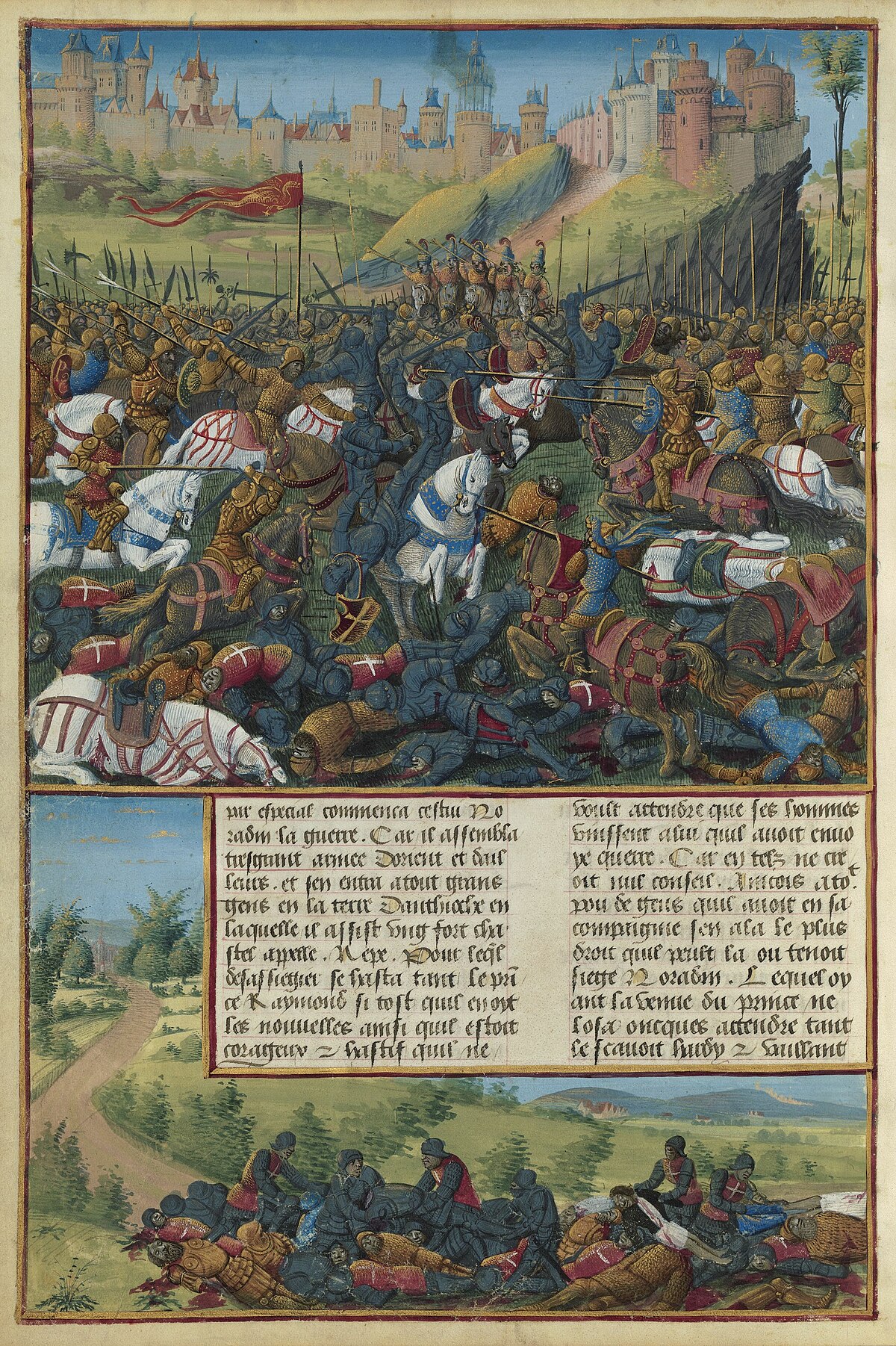
Battle of Inab
Inab, SyriaIn June 1149, Nur ad-Din invaded Antioch and besieged the fortress of Inab, with aid from Unur of Damascus and a force of Turcomans. Nur ad-Din had about 6,000 troops, mostly cavalry, at his disposal. Raymond and his Christian neighbor, Count Joscelin II of Edessa, had been enemies since Raymond had refused to send an army to relieve besieged Edessa in 1146. Joscelin even made a treaty of alliance with Nur ad-Din against Raymond. For their part, Raymond II of Tripoli and the regent Melisende of Jerusalem refused to aid the Prince of Antioch. Feeling confident because he had twice defeated Nur ad-Din previously, Prince Raymond struck out on his own with an army of 400 knights and 1,000 foot soldiers.
Prince Raymond allied himself with Ali ibn-Wafa, a leader of the Assassins and an enemy of Nur ad-Din. Before he had collected all his available forces, Raymond and his ally mounted a relief expedition. Amazed at the weakness of Prince Raymond's army, Nur ad-Din at first suspected that it was only an advance guard and that the main Frankish army must be lurking nearby. Upon the approach of the combined force, Nur ad-Din raised the siege of Inab and withdrew. Rather than staying close to the stronghold, Raymond and ibn-Wafa camped with their forces in open country. After Nur ad-Din's scouts noted that the allies camped in an exposed location and did not receive reinforcements, the atabeg swiftly surrounded the enemy camp during the night.
On 29 June, Nur ad-Din attacked and destroyed the army of Antioch. Presented with an opportunity to escape, the Prince of Antioch refused to abandon his soldiers. Raymond was a man of "immense stature" and fought back, "cutting down all who came near him". Nevertheless, both Raymond and ibn-Wafa were killed, along with Reynald of Marash. A few Franks escaped the disaster. Much of the territory of Antioch was now open to Nur ad-Din, the most important of which was a route to the Mediterranean. Nur ad-Din rode out to the coast and bathed in the sea as a symbol of his conquest.
After his victory, Nur ad-Din went on to capture the fortresses of Artah, Harim, and ‘Imm, which defended the approach to Antioch itself. After the victory at Inab, Nur ad-Din became a hero throughout the Islamic world. His goal became the destruction of the Crusader states, and the strengthening of Islam through jihad.
